Andrea Bocelli’s performance at the Duomo in Milan on Easter Sunday was incredibly moving. It was featured live on YouTube in partnership with the City of Milan. Bocelli volunteered his time.
The opening visuals feature the empty streets of Milan, views from the air and views from the street. It is remarkably empty. While those scenes are brought before our eyes, Bocelli’s voice comes on. He isn’t shy about proclaiming his Christian faith and how it is more needed in a time like this, speaking of “the mystery of birth and rebirth” on Easter Sunday. Bocelli says he believes in “praying together” and “in the Christian Easter” which is “a universal symbol of rebirth that everyone, whether they are believers or not, truly needs right now.” We imagine the people of Italy, who have seen some of the worst suffering due to the coronavirus, especially needs it and so we are here in this city that once served as the capital of the Western Roman Empire.
Milan is a wonderful Italian city, known today as the capital of fashion, but it has also been at the crossroads of so much of Christianity and the renaissance. Bocelli says that Milan and all of Italy will once again be a model for the “engine of a renaissance we all hope for.” He proclaims the start of such a renaissance will be on this day, Easter Sunday, where we will witness this rebirth in the Duomo in Milan.
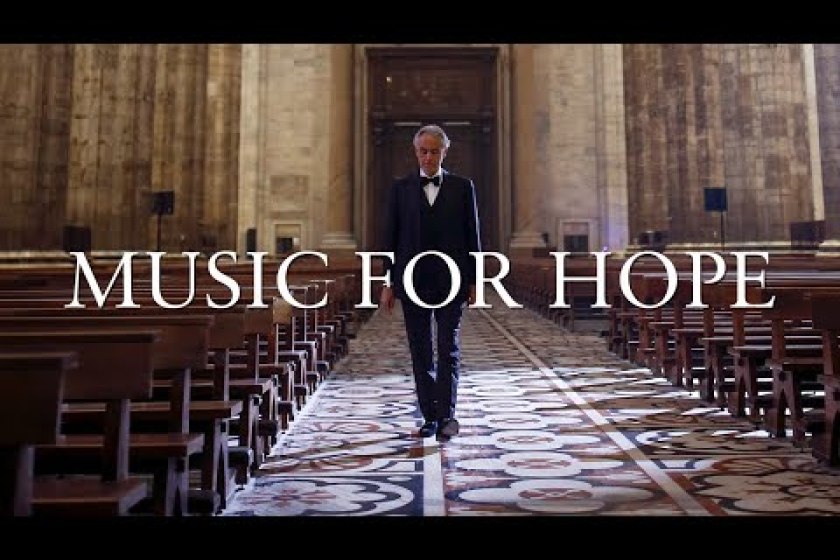
The visuals move us from the streets of Milan to the magnificent exterior of this cathedral, and then inside, where it is absolutely huge and absolutely empty. The only people seen inside are Bocelli, singing from behind the altar, immaculately dressed in a tuxedo, while an organist plays nearby. What’s not seen (although if you look closely you can see a few) are the video crew behind the images we are seeing. So, there are obviously more than just these two performers in this cathedral. After all, someone has to bring us this performance.
There is about 23 minutes of absolutely beautiful music, beginning with “Panis Angelicus” which in Latin means “Bread of Angels” or “Angelic Bread.” We hear Bocelli sing this in its traditional Latin, which most of us do not understand, but clearly this tenor moves us. The translated hymn includes these lines:
May the Bread of Angels
Become bread for mankind:
The Bread of Heaven puts
All foreshadowing to an end;
Oh, thing miraculous!
The body of the Lord will nourish
the poor, the poor,
the servile, and the humble.
The video then flashes to scenes of the empty Italian cities of Bergamo and Brescia. The visual imagery then comes back into the cathedral where closeups are focused on statues of saints and angels. The beautiful architecture is showcased, including wood carvings, beautiful stained glass, and a lavishly decorated pipe organ of which the sounds are emanating from on this Easter Sunday. These are some of the finest examples of the splendor of Western Civilization.
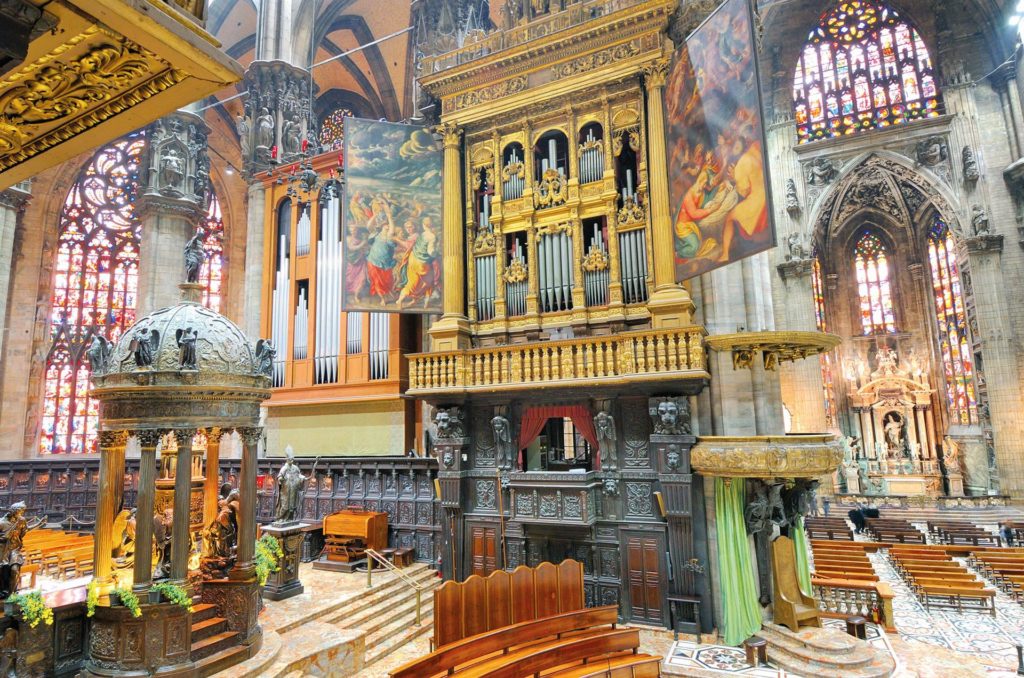
On my second viewing of this, my mind goes for a moment to the contrast of this Easter Sunday performance to one on another big Sunday – Super Bowl Sunday. Unlike the Super Bowl halftime performances, there are no crowds here. There are no gyrations. There are no scantily clad dancers. There are simply two well-dressed men playing to an empty house, built to worship God, not the almighty dollar needed to pay for thirty-second Super Bowl ads – or simply to buy a ticket to the game.
Our churches are usually filled to the brim on Easter Sunday, even if they aren’t filled as much as many other Sundays. One of the things that many American tourists notice when we visit so many of these grand cathedrals in Europe are how they are usually filled more by tourists than they are with parishioners. Many are more like museums than the places of worship they were for centuries before. Today, some of these churches simply try to bring people in by using concerts and laser light shows to attract people inside. But on this particular Easter Sunday, very few are even allowed to go into a church anywhere in the world due to social distancing. However, all of the world’s eyes are fixed on this church, with two men singing and playing to its physical emptiness.
As the first song comes to a conclusion, the visuals take us to the Plaza San Marco in the iconic city of Venice. I remember being there with my brother in the year 2004 – and the famous tower there is depicted at Epcot’s Italy pavilion in Orlando. On this day, the plaza, which is usually overflowing with people and excitement, is completely empty.
We are then taken back to the Duomo in Milan as Bach’s “Ave Maria” begins. As Bocelli sings, the camera pans up to a beautiful stained-glass image of the Virgin Mary. The world is brought together at this moment, crying out to Mary for help. Bach’s Ave Maria is a beautifully sung “Hail Mary” prayer. The camera also takes us to the top of the duomo – where a beautiful gold statue of The Madonna is perched on the highest spire of the cathedral, overlooking the City of Milan. The Duomo’s website says that for centuries The Madonna has represented the heart and soul of this historic Italian city.

Mary is the most perfect woman to ever live. As the mother of Jesus, we hold her in the highest esteem as she is close to her Son and we ask her to bring Him our prayers. There is something about hearing Bocelli sing the “Ave Maria” that lifts the anguish in our souls and brings our cries to Mary in the most beautiful way.
Bocelli then moves into the song “Sancta Maria” which also sings the Hail Mary, in a different way. Yes, on this day, in this hour, Mary gets two songs from the great tenor. And the world, by extension, gets her full undivided attention. The camera then brings us to a grand statue of Mary inside the cathedral, with the baby Jesus in her arms, as the angels are positioned on each side looking up at them. Without realizing it, it is as if the world has paused and we are drawn into something – someone – so beautiful. This performance was billed as “Music for Hope” and that is exactly what Mary is for this world. She represents hope. When she was with child, it was a hope of carrying redemption – for the salvation of the world. Today she is hope as our biggest advocate before her Son and before the Father.
The music now takes a cheerful turn with “Domine Deus.” This is a song honoring God the Father and his son, Jesus, the Lamb of God – to whom Mary points us. And, as a performance, it is really a treat to see Bocelli deliver this.
After the song closes, we see Bocelli walking down the aisle, through this grand cathedral towards its front doors. There are huge columns around him. This place was built centuries ago and stands the test of time. It wasn’t just built for people of the middle ages, but for the generations to come, including our own, on this unforeseen day.
The doors open and Bocelli steps outside. It is quiet outside, yet there is a microphone on a stand for him to sing to this empty plaza, this empty city. He then delivers the most spectacular performance of “Amazing Grace” that perhaps we’ve ever witnessed. The camera zooms out. Bocelli becomes small on the screen as the huge and ornate cathedral behind him comes fully into view. Once the camera gives us the full view of the cathedral, Bocelli is small. His music may have seemed grand – we can still hear him beautifully sing Amazing Grace – but as his love for God is proclaimed through music, God increases, and he decreases. We all must agree Bocelli’s voice is a gift from God, but even someone with such talent must humble himself before the Lord.
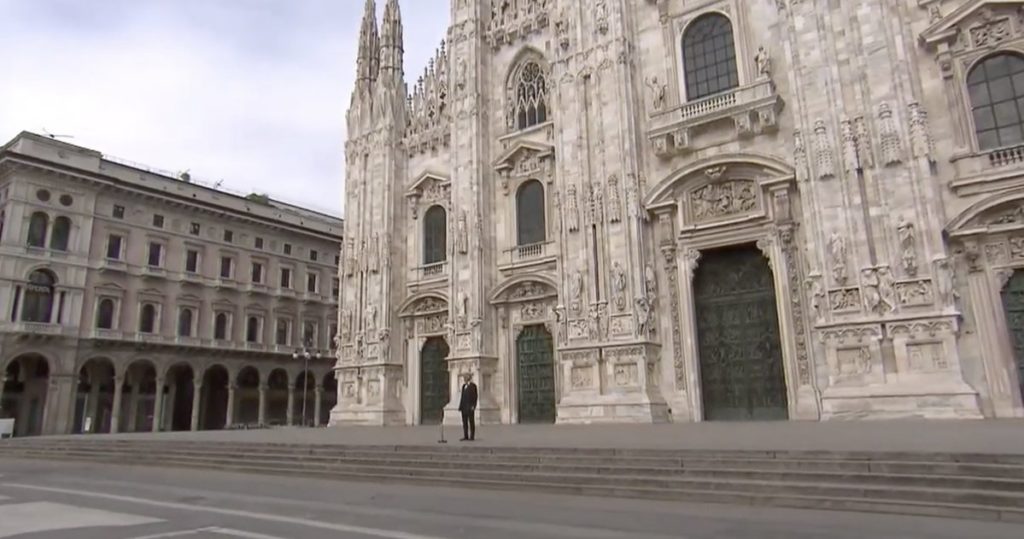
We are then given new visuals on the screen: of the Eiffel tower, the Arc de Triomphe, the streets of Paris. All empty. No souls to be seen. A passing car perhaps to remind us of the traffic that normally fills these streets. Then we see the streets of London. A flock of birds flies through the air over the emptiness. My heart is wrecked. I’ve been to these normally bustling cities. I weep.
“I once was lost but now I see.” These lyrics, written by an abolitionist of slavery, are given new meaning for us today. This culture, this civilization has been lost for some time. But now – amid a plague – we are given this time to pause. This time to reflect. Will we now see?
Then we are shown images of New York City. Lower Manhattan. The Freedom Tower that rose out of the ashes. Times Square. All empty. We come back to Milan for Bocelli’s finale of Amazing Grace and then the video ends and falls to silence and just leaves us with ourselves on our own empty streets. Perhaps these streets are less important than “where the streets have no name,” as Bono has sung.
After watching this Bocelli performance several times, I have increasingly thought about how many of us are often critical of the “trashy” pop culture performances during things like the Super Bowl halftime show. But when the world needs comfort and fulfillment, we turn to Bocelli, singing in one of the magnificent cathedrals of Europe. This performance, with all its visuals, reminds us that the foundations of the West are still there. They are still with us. Perhaps in this moment – this worldwide pause – perhaps there is some divine Providence giving us all this opportunity to recover our foundations – to have a “rebirth” of our souls and, by extension, a rebirth of our culture.
This past spring, National Review Institute, where I work, held a panel at our Palm Beach seminar on “the importance of culture.” When all travel ceded due to social distancing guidelines, we held a second version of that panel – as a podcast. When thinking about this performance in Milan on Easter Sunday, it reminded me of something Kevin Williamson and Jay Nordlinger talked about on that podcast seminar – about this “high culture” as opposed to the “popular culture.” Is the high culture still important even if the masses pay it almost no attention?
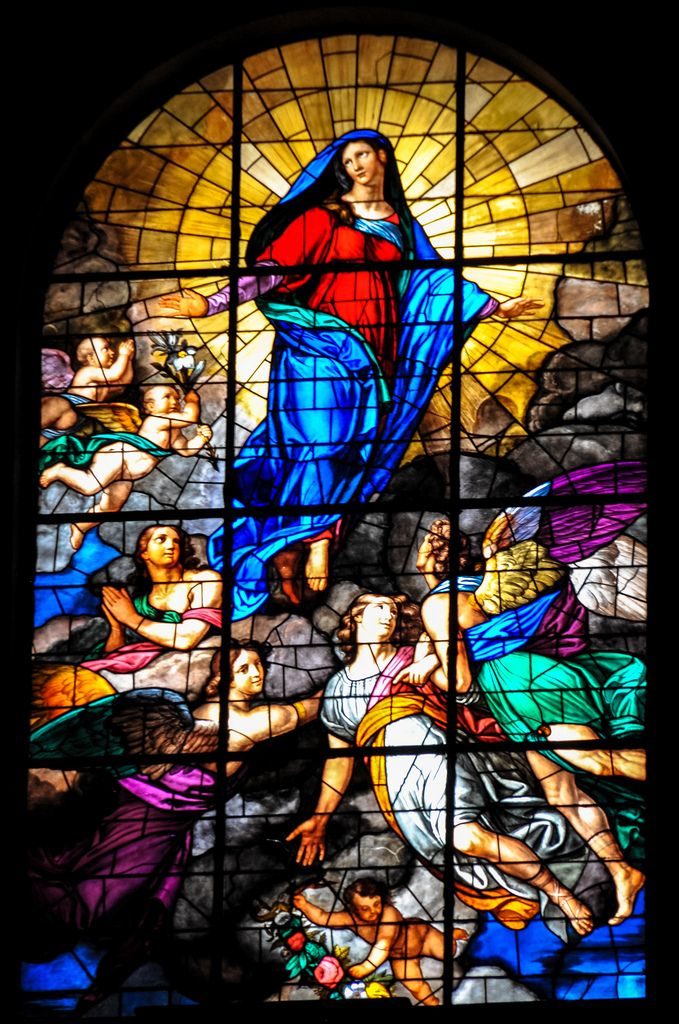
Bocelli singing in the cathedrals of Europe isn’t what our pop culture typically turns to. After all, when given the chance on Super Bowl Sunday – perhaps the most “popular” annual event in the United States today – we turn to flashy pop stars. But that isn’t what we choose to turn to when we want to set our foundation right. However, that high culture of Western Civilization wouldn’t be there if at least some of us didn’t strive to keep it alive. Perhaps divine Providence is guiding us to get back to our roots. Let each of us – and all of us – use this time for personal and communal reflection. Let us remember those things of permanence. Let us turn our eyes to Mary and Jesus and let this music for hope truly deliver a redemption for all. Let us flock back to the churches and to our faith. Let us go where we went on this Easter Sunday, as each of our hearts truly proclaimed: “Sing, Bocelli, sing!” Let us remember to whom he was singing. And let us remember to prioritize the one Sunday that is truly the greatest of all.
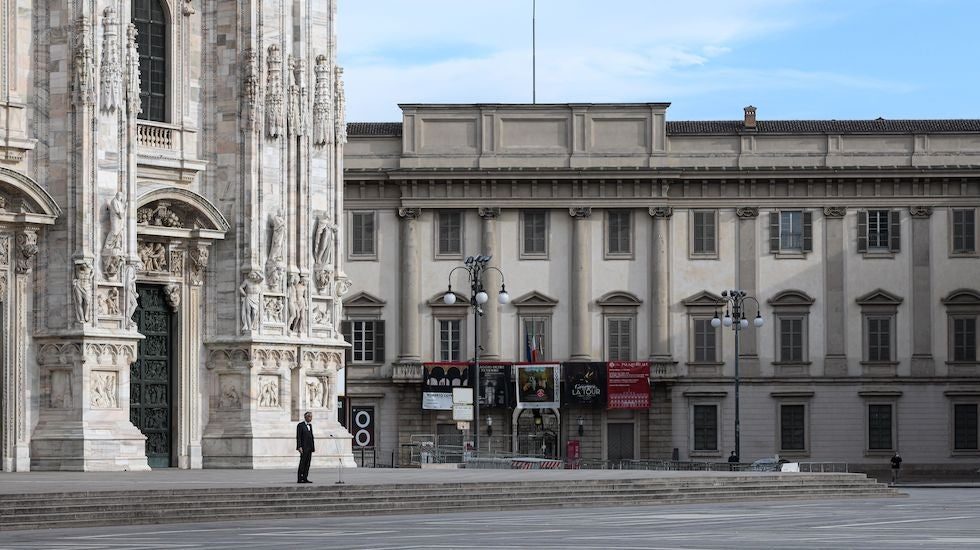
Great review of a very moving experience, and, very descriptive of what we know are the deeper causes, means, and ends in life.
A beautiful writing and reflection of what is really important in life. It was a very moving performance.